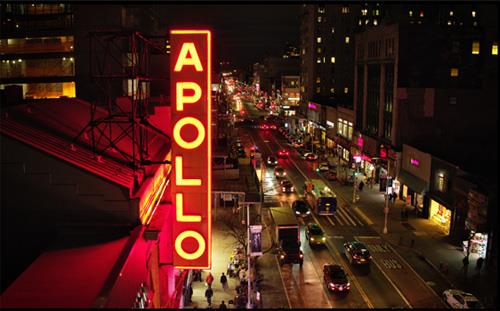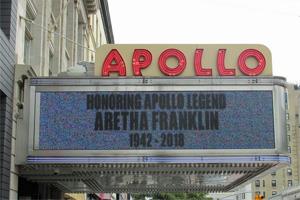
A new documentary on Harlem’s legendary Apollo Theater tells its chosen part of the Apollo story well.
The Apollo, which premieres Wednesday at 9 p.m. ET on HBO, focuses on the theater’s importance as a socio-political force in Harlem, New York, and in the national black community.
When much of America slammed doors in the faces of black entertainers, and black folks in general, the Apollo threw its doors open.
 It provided a showcase for those entertainers, who included some of the finest America has produced. That showcase cast a glow that helped light the path for the broader black community, making it harder and ultimately impossible for the forces of oppression to deny that community a voice and a seat at the table.
It provided a showcase for those entertainers, who included some of the finest America has produced. That showcase cast a glow that helped light the path for the broader black community, making it harder and ultimately impossible for the forces of oppression to deny that community a voice and a seat at the table.
Director Roger Ross Williams demands that viewers of The Apollo understand the challenges the black community has historically faced and continues to face. The Apollo Theater, he and his subjects repeatedly declare, has provided a cultural and musical megaphone with which to combat those challenges.
One of the last and best-known survivors from an age when modest-sized theaters were the center of American entertainment, the Apollo Theater has a fascinating story on several levels.
The music, certainly, is a tale of its own, and Williams weaves vintage performance clips into his story. Watching Stevie Wonder (above) perform his famous live 1963 version of "Fingertips" will make viewers burst into applause in their living rooms.
Williams leaves the full musical story to others, however. He reveres the music. It just isn’t his focus.
Rather, he assesses the Apollo as a cultural touchstone, with testimony from entertainers like Smokey Robinson, Jamie Foxx, and Savion Glover, interspersed with activists and the people who run the Apollo today.
Their messages, from different perspectives, all converge here: The Apollo shouldn't be just a museum but should provide an ongoing forum for community voices and entertainers.
Toward that end, the performance clips show socially engaged artists like Lauryn Hill and Chuck D with Public Enemy. The vintage clip of Billie Holiday has her singing "Strange Fruit," a haunting song about the evils of lynching.
 The Apollo isn't a political documentary. It touches on lighter topics like the hierarchy in the theater's cramped dressing rooms, and it has a lovely segment on great entertainers who have been memorialized at the theater, including James Brown and Aretha Franklin.
The Apollo isn't a political documentary. It touches on lighter topics like the hierarchy in the theater's cramped dressing rooms, and it has a lovely segment on great entertainers who have been memorialized at the theater, including James Brown and Aretha Franklin.
What it doesn't tackle extensively is a third fascinating element of Apollo history, its business side.
Williams includes, wisely and well, several reflections from Bobby Schiffman, whose father Frank opened the Apollo in 1934 and who himself ran it in the 1950s and '60s.
Schiffman explains the shifting economics of live performance, a sea change that boosted performer salaries to levels where mid-sized theaters like the Apollo could no longer afford them.
Schiffman notes that the first time Gladys Knight and the Pips played the Apollo, they got $800 for 31 shows. The last time, they were paid $80,000 for 16. That's great for the artist, not so good for the theater owner who might have to raise ticket prices to unaffordable levels.
But the business side, in general, is something that Williams leaves to other historians.
He pretty much skips over the troubled times between the last Schiffman years and the eventual agreement to have the theater run by the current foundation. The Apollo notes only that it was bought out of bankruptcy by the late Percy Sutton, who saved it but ultimately couldn't solve the financial dilemma.
Nor were those years the only ones where the Apollo struggled. While today we look at a lineup that included regular shows by the likes of Duke Ellington, Cab Calloway, and James Brown and assume the theater must have been turning people away nightly; in fact, it went through long stretches where it had to scramble.
That also says a lot about America and the times, and it's essential to understanding the full Apollo story. That said, Williams has made the right call in telling more fully his part of the story – which is, arguably, the most important.
Williams frames the Apollo as a symbol of hope, defiance, and triumph, powered by music that the greater society tried to muffle.
The original Apollo was the Greek god of music, poetry, light, prophecy, and medicine. The Apollo Theater practiced medicine only in the most figurative sense, but Williams makes a strong case that it honors well everything else in the god's purview.